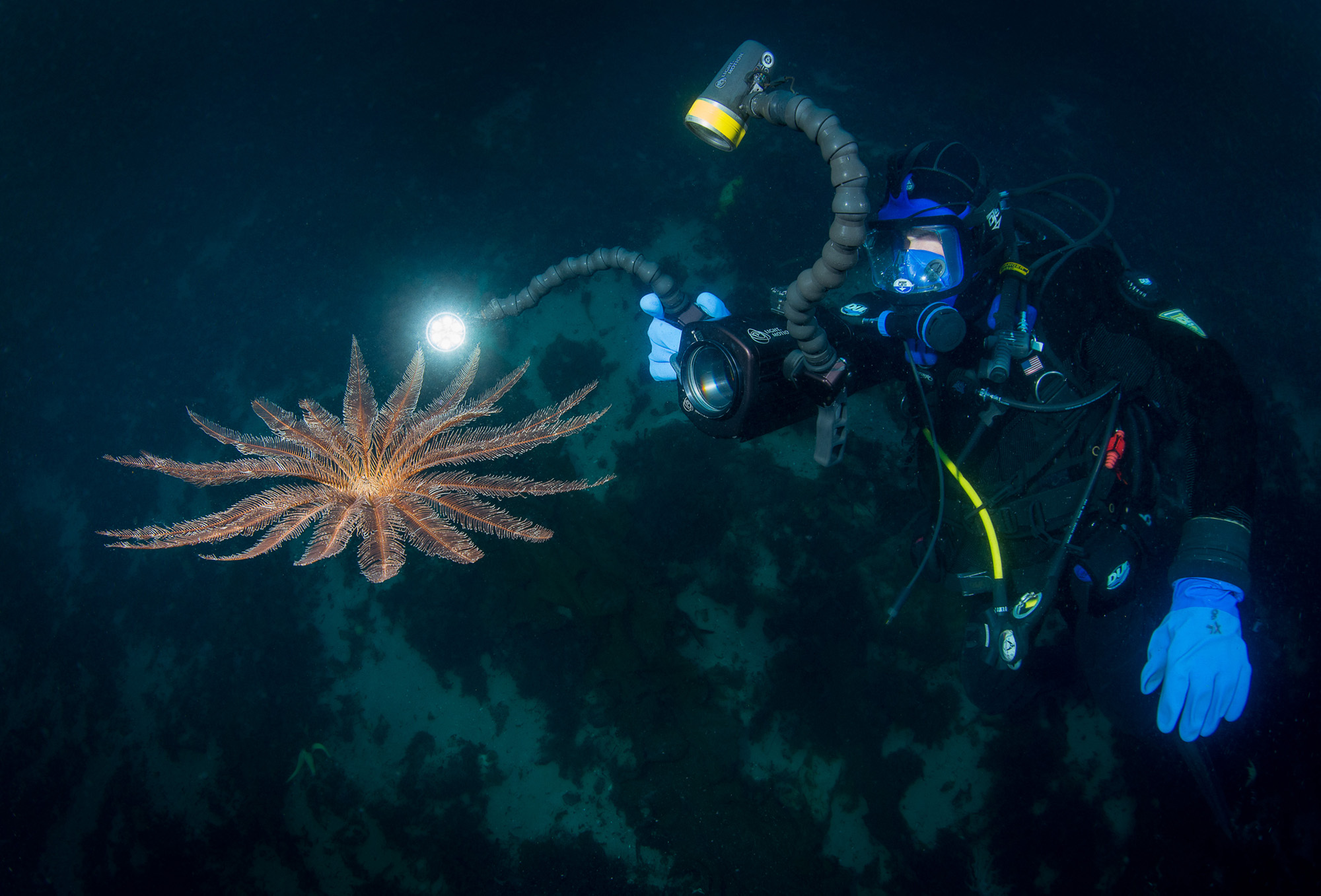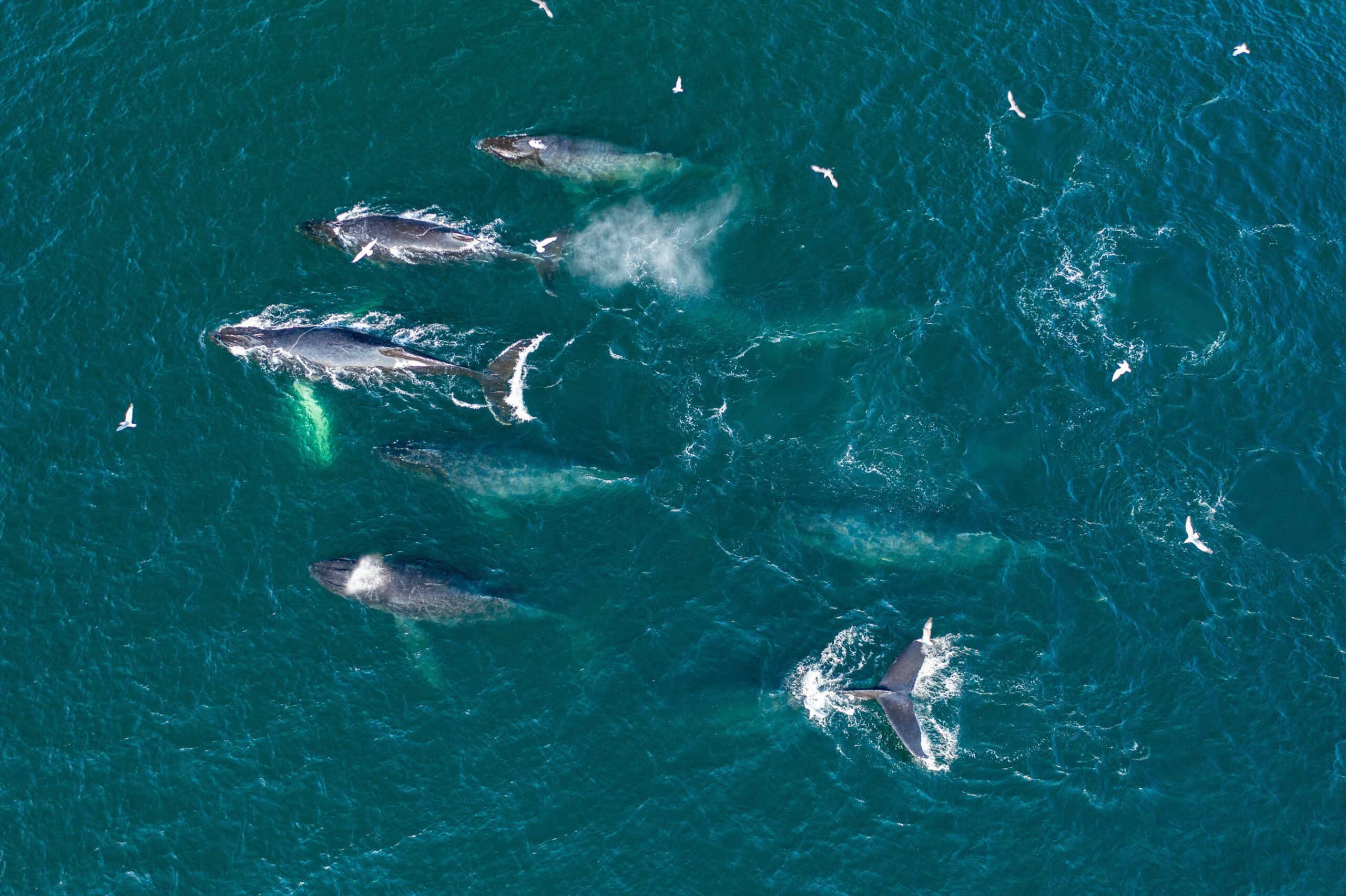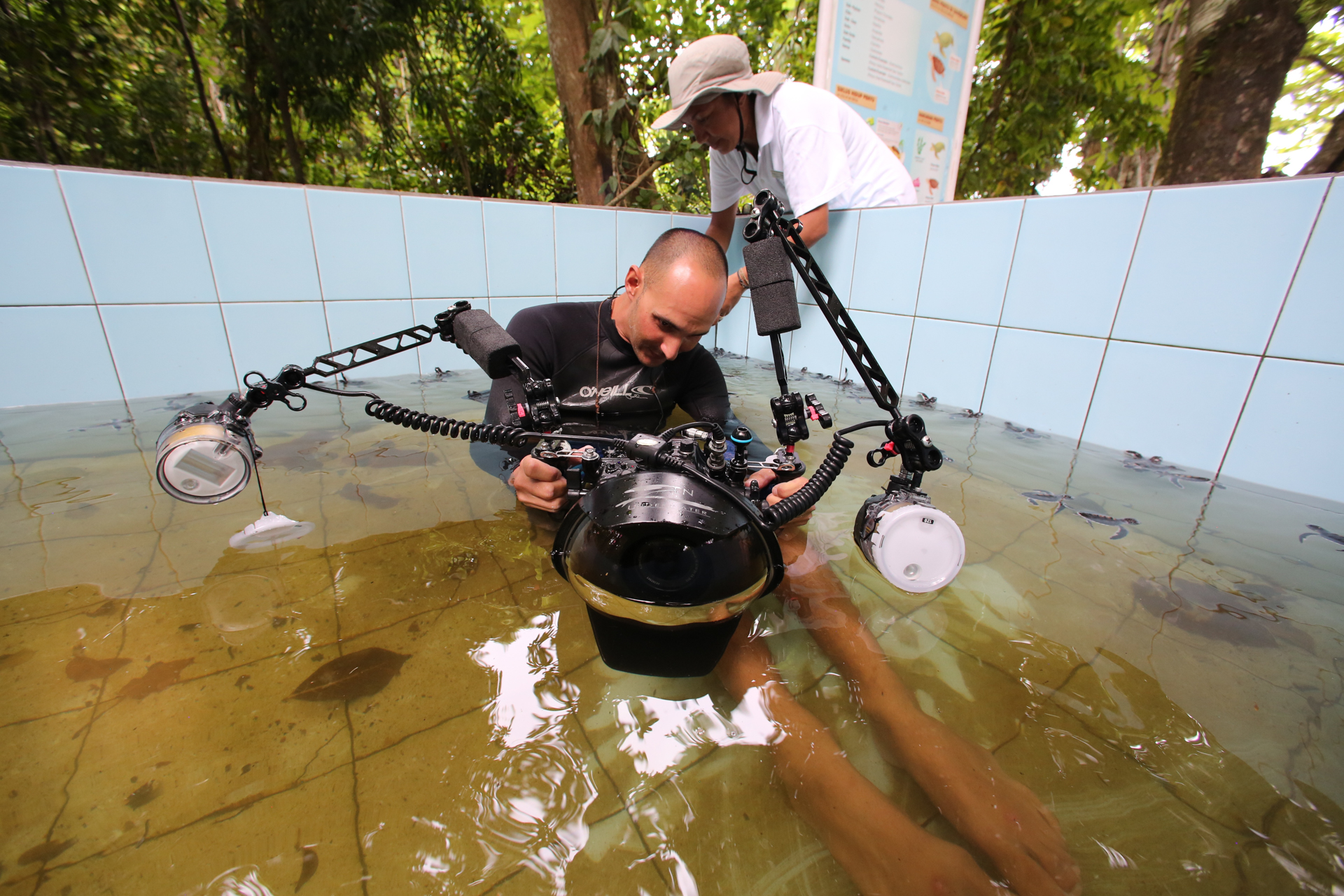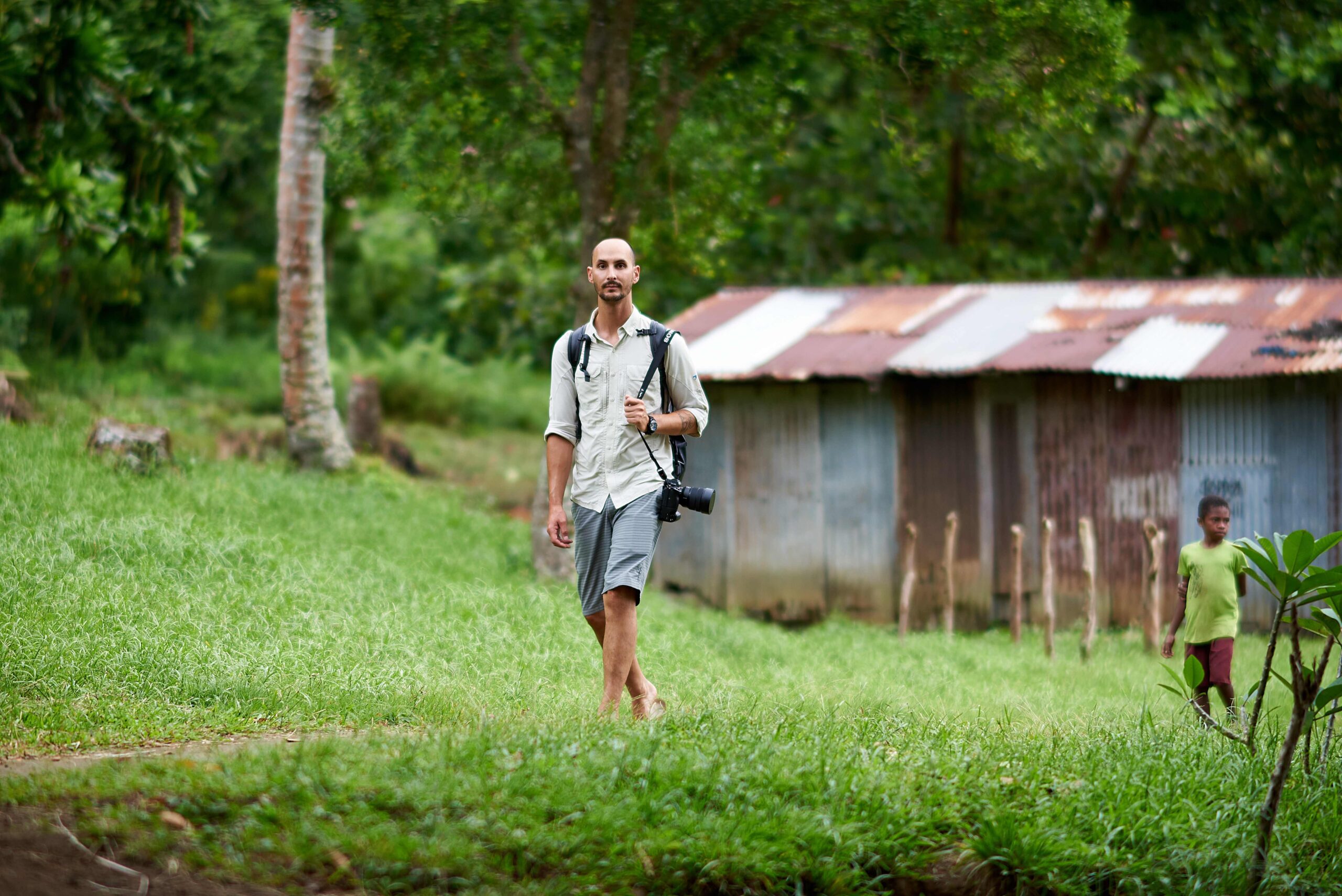Justin Hofman is a renowned photographer and seasoned expedition guide with EYOS whose work seamlessly blends the thrill of adventure with the artistry of photography. With a passion for exploring remote corners of the world, Justin has captured breathtaking images that not only showcase the beauty of our planet but also highlight pressing environmental issues. His portfolio spans from the icy landscapes of Antarctica to the vibrant coral reefs of the Pacific. Join us for a conversation with Justin about how he sees the world through his lens.
- How did you first become interested in both photography and leading expeditions? Were they separate interests that converged or did one lead naturally to the other?
My interest in photography started as a kid but I didn’t actually pick up a camera until I was part way through college. I started to do some volunteering on field projects and realized that I was seeing some really interesting things, so I should try to document them to share with my family. My biggest influence was the legendary photojournalist David Liitschwager. David was on an assignment for National Geographic Magazine at Sequoia National Park, where I was working as a scientific illustrator. To keep from going crazy indoors, I would go into the field with David and the cave biologist, help carry gear, and find the insects he was there to photograph. Sitting in the dark of a cave, watching David work by headlamp with no time constraints, and fully realized creativity, I realized that I wanted to pursue photography in a meaningful way.
Leading expeditions came about as a side quest to becoming a full-time photographer. I realized that my background in biology and logistics meant I had a particular set of skills useful in the expedition industry. These days I find great satisfaction in taking inquisitive travelers to beautiful places in beautiful conditions. Even if you are not seeking out a location or an animal to photograph, the skills involved in making impactful photographs also translate into knowing the best time and place to have an encounter with a wild animal or wilderness in general.

- In your opinion, what role does photography play in inspiring environmental conservation efforts, and how have you seen your work contribute to this cause?
It’s easy to get cynical about media in our over-documented, over-shared world but media has played an important role in shaping my early life and I have to remind myself of that constantly. Without the stunning work of David Doubilet and Flip Nicklin, I may not have been as enthusiastic about sharks and whales as I am now. As a little kid with limited access to wilderness, media shaped my understanding and enthusiasm for the natural world. Today it’s more difficult than ever to break through the noise, but occasionally someone catches lightning in a bottle which inspires important conversation. In the end, the full measure of an image’s real-world impact is impossible to measure, but at least it starts a conversation. I know for sure that my images have led to conversations about how we can be better stewards for our planet. Even if only one of those conversations leads to positive action, then I’d say that’s remarkable.

- What are some of the lesser-known challenges that expedition guides and adventure photographers face that the general public might not be aware of? What challenges do you typically face when capturing photographs in remote or extreme environments, and how do you overcome them?
Guides, especially those that have been around for a while, have seen an incredible amount of change in the health of our planet. We are in remote places more often than scientists. Many of us carry a grief that’s often kept fairly silent or we may only allude to with anecdotes or asides. The places that we have committed our lives to understand, cherish, and share with travelers are under threat and we are seeing the change from season to season. If you get a group of guides together for an extended period of time, invariably they will start to talk about how things have changed. Many of us have a shared ecological grief which is its own challenge.

- Is there any one photo that stands out to you from your portfolio that best showcases what you look to achieve with your photography?
My favorite photograph is a shot that I got in a very rough crossing of the Drake Passage. To this day it was the best combination of light and subject I’ve ever seen: huge, nasty waves, birds, and the light of a clearing storm. It looked like a real-life Ivan Aivazovsky painting and I hope that it conveys the same power as his incredible works. Long ago I stopped taking photographs with an editor in mind, and it has opened up my creativity much more than I could have ever expected. The only person I am hoping to impress is myself. I find that I enjoy the act of photography much more this way.

- Looking ahead, what destinations or projects are on your bucket list, and what do you hope to achieve with your future expeditions and photography?
I have always wanted to go to Kamchatka, the Kuril Islands, and the Tipuis of Venezuela. Unless things change significantly on the political realm, they are probably going to stay in that bucket list. On the more realistic side, the Okavango Delta of Botswana has been calling me for many years. I suppose it’s the combination of water, boating activities, and massive amounts of wildlife that make it really intriguing.
For projects, I would love to have an iceberg-focused trip to Antarctica. To me there is nothing more incredible than icebergs getting thrashed by stormy conditions. I have had fleeting looks at this and have managed to snap off a few alright shots, but one day I want to gather some hearty, like-minded folks on a very sturdy and capable vessel just to focus on wind and wave whipped icebergs. The best part is that when there’s no wind or waves, we’ll have plenty of animals to experience.
My only goal with photography is to enjoy the act of making pictures, soak in the moment, and have at least one photograph per trip that looks good as a screensaver on my computer.
